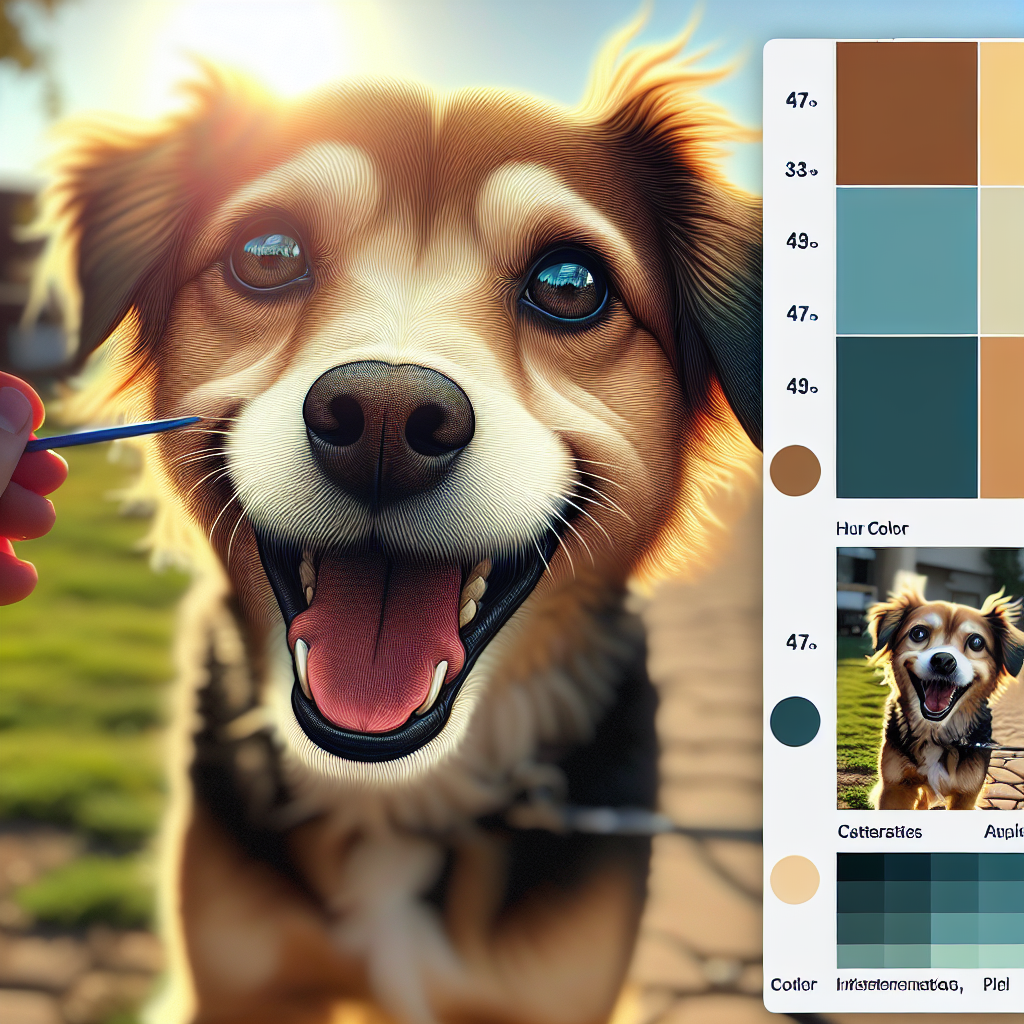Introduction

Fleas. Those tiny tyrants that turn our homes into battlefields. I mean, who knew? One minute you’re enjoying a quiet evening, and the next, you’re scratching your head (literally and metaphorically) trying to figure out how to rid your home of these tiny invaders. There’s a lot to unpack here, folks. And as someone who’s spent more time than I’d like to admit dealing with these critters, I’ve found that a natural flea spray for home use can be a game changer.
Let’s face it, no one wants their home smelling like a chemical factory. Lucky for us, Mother Nature’s got our backs. We’ve got some nifty tricks up our sleeves involving stuff you might already have around the house. And the best part? They’re all about keeping it au naturel. No need to break out the hazmat suit.
Understanding Fleas and Their Impact
Oh, fleas. They may be small, but they sure know how to make their presence felt, don’t they? These tiny jumpers can wreak havoc not just on our pets but on us humans, too. I remember this one summer—must’ve been about ’05—I was knee-deep in flea city. The bites, the itching, the constant paranoia. It’s a wonder I didn’t lose my mind.
Fleas are more than just an itchy inconvenience. They can lead to allergic reactions, transmit diseases, and cause all sorts of mayhem if left unchecked. And let’s not even talk about what they do to our furry friends. It’s like a tiny vampire convention, minus the charisma. That’s why figuring out a solid flea prevention plan is crucial. And no, it doesn’t involve garlic or stakes.
Homemade Flea Sprays: A Natural Approach
You might be wondering if a homemade flea repellent can hold its own against those store-bought concoctions. I wondered the same thing once. But let me tell you, there’s something magical about whipping up your own solutions. Not only do you know what’s going into them, but it also feels pretty darn empowering.
The Magic of Essential Oils
Essential oils, folks. They’re not just for yoga studios and hipster cafes. These little bottles pack a punch when it comes to flea control. Peppermint, lavender, eucalyptus—these aren’t just fancy words. They’re your new best friends.
I once had a neighbor who swore by a mint and cedarwood flea spray. Thought he was nuts until I tried it myself. Mixed a few drops of essential oils with water and a splash of vinegar in a spray bottle. Gave the couch a good spritz, and voila—flea-free zone. Essential oils for flea control are the real deal, and they smell pretty good too.
Lemon Juice: A Citrus Solution
Lemon juice. Not just for cocktails, folks. It’s a flea’s worst nightmare. Something about that citrus scent sends them running for the hills. I once spent an entire afternoon squeezing lemons, and my hands smelled like a dream. The next day, I sprayed a homemade lemon juice flea remedy around the house. The result? A flea exodus.
Sure, it’s a bit of work, but think of it as free arm exercise. Plus, there’s something satisfying about using kitchen staples to solve a problem. It’s like the universe is telling you, “Hey, you’ve got this.”
Diatomaceous Earth: A Handy Helper
Now, let’s talk about diatomaceous earth. Sounds fancy, right? But it’s just good old fossilized remains of tiny algae. Trust me, it’s more exciting than it sounds. This stuff is like kryptonite for fleas. Sprinkle it around, and it goes to work drying those pests out.
Yeah, I know, it sounds a bit like witchcraft. But for a natural flea spray for home use, it’s pretty hard to beat. I had my doubts at first. But after a particularly persistent flea problem, I figured it was worth a shot. A few days later, it was like flea Armageddon had hit.
The key is finding food-grade diatomaceous earth. No need to go all Mad Scientist with this stuff. Just sprinkle it in those hard-to-reach places—carpets, cracks, wherever those little buggers might be hiding. It’s a bit messy, but hey, nothing a good vacuum can’t fix.
Empowering Your Flea-Free Journey
Alright, so you’ve got your natural flea spray for home, and you’re ready to kick some flea butt. It won’t be easy, and it won’t be quick. But with a little patience and some homemade magic, you’ll get there.
Remember, you’re not alone in this. I’ve been there, scratching my head (and my arms) in frustration. But if there’s one thing I’ve learned, it’s that persistence pays off. So keep at it, and soon enough, you’ll be the proud owner of a flea-free home.
And hey, thanks for sticking around to hear my ramblings. I hope you’ve found a nugget of wisdom or two. Here’s to you and your flea-free journey. Keep fighting the good fight!
Why Most Store-Bought Flea Sprays Fail
Ah, the allure of the store-bought flea spray—the quick fix in a can. You see it on the shelf, promising a flea-free life. But more often than not, it’s all bark and no bite. Let’s face it, these sprays can leave you itching both physically and financially. You know, it’s like trying to swat a fly with a feather—the intention is there, but the execution? Not so much.
The problem with these sprays is their ingredients. Those scientific names on the back? Might as well be hieroglyphics. They sound impressive, but in reality, they often fall short. Fleas are resilient little critters, and they laugh in the face of chemical warfare. Plus, you have to think about the safety of your pets and family. Some of these sprays are packed with harsh chemicals that you wouldn’t want anywhere near your loved ones.
Ever notice how fast those cans empty? It’s like they’re designed to wind up in your shopping cart every other week. Not to mention, the scent. Oh, the scent! A pungent reminder that you just spent money on a product that’s more flash than substance. Maybe it’s time to look at more natural flea spray options.
Ingredients You Already Have That Can Fight Fleas
You’ve got a kitchen full of natural flea spray ingredients, and you might not even know it. It’s like a secret arsenal hiding in plain sight. Vinegar, lemon juice, and essential oils like lavender or peppermint can work wonders. It’s almost poetic how these everyday items can double as your flea-fighting squad.
Vinegar, for instance, is a powerhouse. Fleas hate it. Mix it with water, and you have the base for a homemade flea spray recipe that won’t break the bank. Lemon juice adds a refreshing twist and can deter fleas with its natural acidity. Essential oils not only smell delightful but also pack a punch against fleas. Think of it as aromatherapy with benefits.
And the best part? No need to worry about harmful chemicals around your pets. Natural flea spray ingredients are safer, and you probably already have them. It’s like finding treasure in your pantry. Just a few shakes and you’re ready to take on those pesky fleas.
How to Make Your Own Flea Spray: A Step-by-Step Guide
Ready to play mad scientist? Grab your lab coat—or bathrobe—and let’s dive into the world of DIY flea spray for pets. It’s simple, satisfying, and oddly entertaining. Plus, it’s an excuse to use those mason jars collecting dust.
1.
Gather Your Ingredients
: Vinegar, lemon juice, and essential oils (like lavender or peppermint). You’ll also need water and a spray bottle. Nothing fancy, just the basics.
2.
Mix It Up
: Combine equal parts vinegar and water in your spray bottle. Add a splash of lemon juice—just a splash, mind you, not a waterfall. Then, toss in about 10 drops of essential oil. Give it a good shake.
3.
Test It Out
: Before going full throttle, do a patch test on a small area of your pet’s fur. Better safe than sorry. Once you get the all-clear, you’re good to go.
4.
Spray Away
: Lightly mist your pet, avoiding their eyes and mouth. Don’t forget their bedding and favorite hangout spots. It’s like giving your home a spa day, with the bonus of evicting fleas.
See? No explosions, no drama—just a simple, effective solution. You’re practically a flea-fighting ninja now.
Mistakes to Avoid When Using Natural Flea Sprays
Even the best-laid plans can go awry. Using natural flea sprays is no exception. Let’s talk about those common flea spray mistakes—because forewarned is forearmed.
First up, the rookie mistake: using too much. More isn’t always better. It’s tempting to douse everything in sight, but that’s overkill. A light mist is all you need. Remember, you’re not painting a fence, you’re repelling fleas.
Another pitfall? Ignoring the patch test. Skipping this step is like jumping into a pool without checking the water temperature. You might get lucky, but why risk it? Always do a test to ensure your pet’s skin is okay with the spray.
Oh, and don’t forget to reapply. Natural flea sprays aren’t a one-and-done deal. They need a little love and attention to work their magic. Think of it as maintenance, like watering a plant. Keep it up, and you’ll keep the fleas at bay.
Real-Life Success Stories: Readers Share Their Wins
Nothing beats hearing about real flea spray success stories. It’s like a warm hug from a fellow flea warrior. Here are some reader flea spray stories to inspire you.
Take Lisa, for instance. She was at her wit’s end with store-bought sprays. Then she stumbled upon a natural flea spray tip that changed everything. A few spritzes of her homemade concoction, and her home was flea-free. Her cats? Happier than ever.
Then there’s Tom. His dog, Max, was a flea magnet. After a DIY flea spray for pets, Max is now living his best life, flea-free. Tom’s story is proof that sometimes, the simplest solutions are the best.
Hearing these tales of triumph, it’s hard not to feel a sense of camaraderie. You’re not alone in this fight. Real folks have been where you are, and they’ve come out victorious. So, grab your spray bottle, mix up your potion, and join the ranks of the flea-free. Thanks for sticking around, and good luck on your flea-fighting journey!
The DIY Flea Spray Recipe: What You Need and How to Make It
Alright, folks, let’s get down to the nitty-gritty. You wanna tackle those pesky fleas without the chemical warfare, right? Well, you’re in the right place. We’re talking DIY flea spray—grab your pen and paper, ’cause you’re gonna wanna jot this down. First up, the recipe. It’s like whipping up a gourmet meal, but for your living room. You’ll need some household items—things you probably already have. Vinegar, water, and just a hint of lemon juice. Mix it all up, and voilà—you’ve got yourself a natural flea spray. Easy as pie, and just as satisfying.
So, here’s the scoop. A little vinegar, a splash of water, and a squeeze of lemon. Simple, right? This concoction is your secret weapon—a DIY flea spray recipe to rival all others. Toss it in a spray bottle, give it a good shake, and you’re ready to go. It’s not rocket science, but it sure feels like magic when you see those fleas scatter.
Testing the Spray: From Kitchen to Living Room
Now, you can’t just let it sit there on the counter. Time to test it. Start in the kitchen, move to the living room. Don’t be shy—give it a good spritz. Watch those fleas scatter like they’re late for a meeting. But be warned, not every spray session is a success story—sometimes, it’s a learning experience.
You spritz a little here, a little there, and watch the magic unfold. Testing flea spray at home is equal parts science and art. You’ve got to find your rhythm, your own flea-busting groove. Sometimes it works like a charm, other times—well, let’s just say there’s room for improvement. But that’s the beauty of it. You learn, you adapt, you conquer.
Common Mistakes and How to Avoid Them
And speaking of learning, let’s chat about those oops moments. You know, the times you spray too much and the house smells like a vinegar factory. Or when you miss a spot and the fleas throw a little house party. We’ve all been there. The trick is knowing how to dodge those slip-ups.
We’ve all been there, right? One minute you’re a flea-fightin’ hero, the next you’re gagging on vinegar fumes. It happens. Maybe you overdid it, or maybe you missed a spot. Whatever the case, it’s all part of the journey. Just remember—less is more, and consistency is key. Avoid flea spray mistakes by keeping it simple and sticking to the plan.
The Unexpected Benefits of Natural Flea Sprays
But hey, it’s not all about the fleas. There are perks—like how your home smells fresh, or how you suddenly become the neighborhood guru of flea control. Who knew, right? It’s like finding a ten-dollar bill in an old coat pocket.
Ah, the unexpected benefits of flea sprays. Your home smells citrusy fresh, and your neighbors think you’re a genius. Who’d have thought a little vinegar and lemon could do so much? It’s not just about the fleas, it’s about the whole vibe. You’re not just maintaining a flea-free home—you’re living the dream.
Your Flea-Free Home: Maintaining the Peace
Finally, once you’ve got your flea situation under control, it’s all about keeping it that way. Regular spritzing, a little vigilance, and you’ll be flea-free. It’s not rocket science, just a bit of elbow grease and some good ol’ fashioned persistence.
So, you’ve done it. Your home is a flea-free paradise. But now comes the hard part—maintaining it. Keep up with your spritzing, stay vigilant, and don’t let those fleas catch you napping. It’s a battle, sure, but it’s one you can win. Thanks for tagging along on this flea-fighting journey. You’ve got this—flea-free living is just a spray away. Cheers to a peaceful, itch-free home!
Quick Takeaways:
Alright, let’s cut to the chase. Fleas are those unwelcome guests that crash your party and refuse to leave. But hey, who needs store-bought sprays that read like a chemistry exam? Here’s the lowdown on tackling them naturally, like a boss. First off, get your hands on some essential oils for flea control. A little mint and cedarwood can go a long way. Combine it with lemon juice for a flea remedy that’s as refreshing as it is effective. Diatomaceous earth is another ace up your sleeve—safe and straightforward. You sprinkle it around where fleas like to hang out and let it do its magic.
Now, don’t forget about your homemade flea spray recipe. A mix of vinegar and water can be a game-changer. Add some natural flea spray ingredients like essential oils, and you’re good to go. But here’s the kicker—test it out at home first. Nobody wants to end up with a lemon-scented disaster. Apply it with care, and keep an eye out for common flea spray mistakes. Sometimes, less is more. And let’s not overlook those reader flea spray stories. Real folks have beaten the flea menace and come out smelling like roses.
Finally, maintain your momentum. Regular spritzing and a bit of vigilance can keep your home flea-free. It’s not magic—just persistence and a little elbow grease. So, roll up your sleeves and get spraying!
FAQs:
1. What are some effective natural flea spray ingredients?
You can start with essential oils like mint and cedarwood. Add lemon juice for a fresh twist and vinegar for that extra punch. Mix these with water, and you’ve got yourself a natural flea spray for home use. Just remember to test it on a small area before going wild.
2. Can diatomaceous earth be part of a homemade flea repellent?
Absolutely! Diatomaceous earth is like your secret weapon. It dehydrates fleas and is safe for use in homes. Just sprinkle it around your pet’s bedding or any flea-prone areas. Give it a few days, and vacuum it up. It’s as simple as that.
3. How often should I use a natural flea spray for home?
Consistency is key. Start with a few times a week, and adjust based on your situation. If you notice fleas making a comeback, increase usage. But if things are under control, you can scale back. Always keep an eye out for any reactions on surfaces or with pets.
4. What are some common flea spray mistakes to avoid?
Ah, the classic blunders. Using too much spray, for one. It can leave your home smelling like a vinegar factory. Also, missing spots where fleas like to hide—under furniture and in nooks. And don’t forget to test a small area first to avoid unpleasant surprises.
5. Do homemade flea repellents work as well as store-bought sprays?
In many cases, yes. Homemade flea repellents can be just as effective if used correctly. The key is regular application and using the right ingredients. Plus, they’re often safer and more cost-effective. But if you’re dealing with a severe infestation, you might want to consult a professional.
Conclusion:
So, there you have it—your guide to natural flea spray for home. It’s not rocket science, just a dash of common sense and a sprinkle of determination. You don’t need to break the bank or bring in the heavy artillery. Sometimes, the best solutions are right under your nose, or in your kitchen cabinet. Whether it’s a homemade flea spray recipe or diatomaceous earth, you’ve got options. Take a breath, grab your ingredients, and get to work. Remember, it’s all about persistence. Keep at it, and you’ll be waving goodbye to those pesky fleas in no time. Thanks for sticking with me on this journey. Here’s to a flea-free home and a peaceful, itch-free life. You’ve got this!
References:
1. https://www.thespruce.com/homemade-flea-repellent-1388143
2. https://www.webmd.com/pets/ss/slideshow-fleas-natural-remedies
3. https://www.akcpetinsurance.com/blog/natural-flea-and-tick-prevention
4. https://www.amazon.com/TropiClean-Strength-Treatment-Prevention-Powerful/dp/B01EUMTNY2
5. https://www.hartz.com/product/hartz-natures-shield-flea-tick-home-spray/
Our solution eradicates fleas on contact without harmful chemicals, ensuring a safe environment for your pets and family. Easy to use and highly effective, SayByeBugs helps you maintain a flea-free home. Learn more and order today at SayByeBugs.com
Our solution eradicates fleas on contact without harmful chemicals, ensuring a safe environment for your pets and family. Easy to use and highly effective, SayByeBugs helps you maintain a flea-free home. Learn more and order today at SayByeBugs.com








